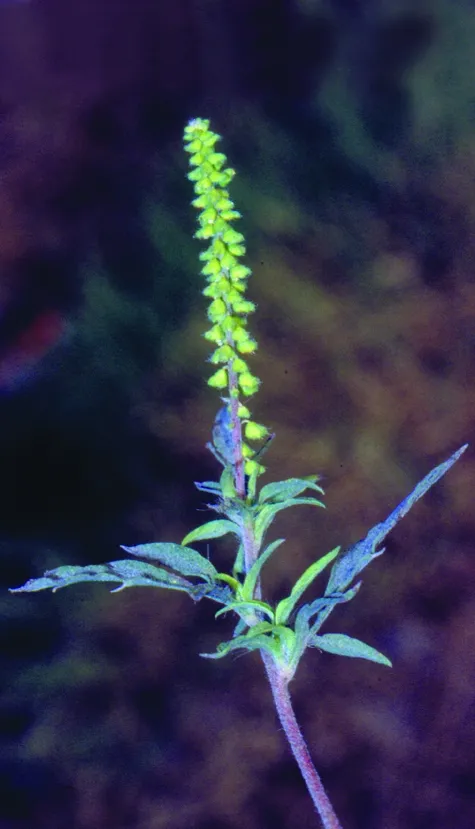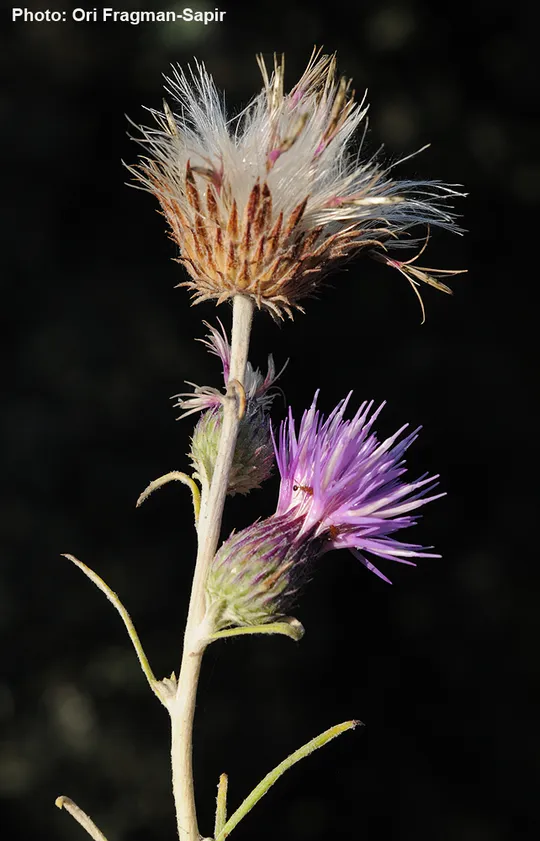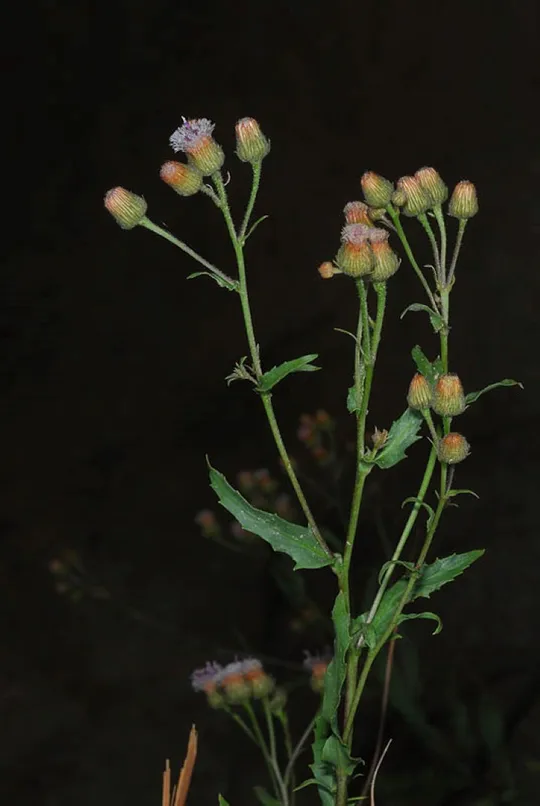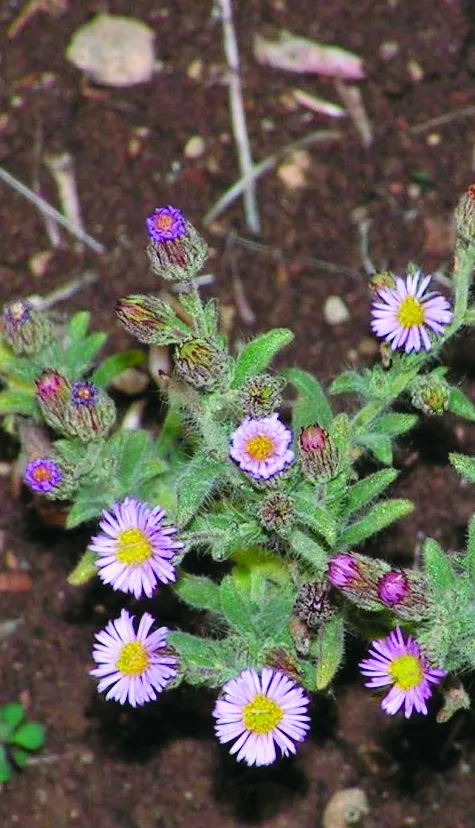Sea Starwort, Sea Aster
Aster tripolium

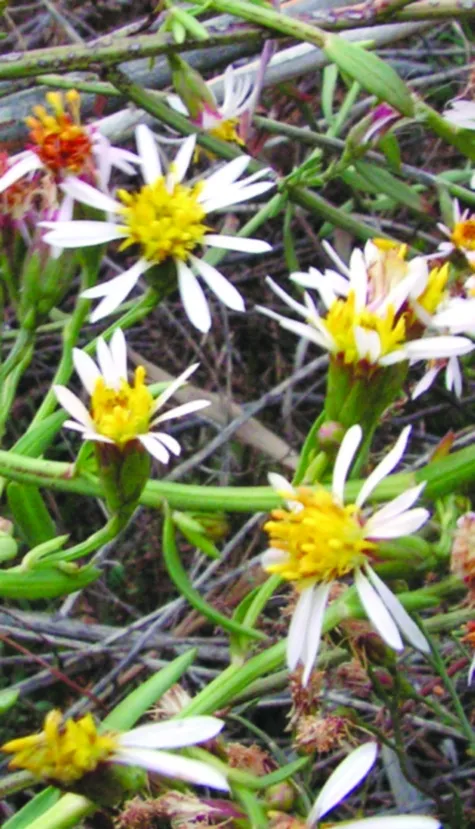
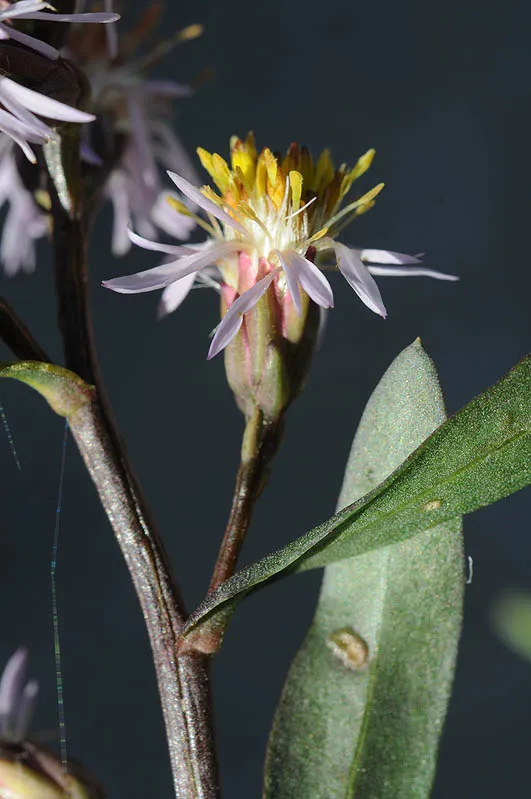
Aster tripolium is a short-lived perennial herb with beautiful flowers. The plant is upright, 40-100 cm tall. The elongated-elliptical leaves are entire or almost entire, fleshy and sessile. The inflorescence is composed of yellow tubular flowers in the center, surrounded by blue ray flowers, arranged in one or two whorls. It is about 13 mm long and 20 mm across. A. tripolium is a halophyte (salt marsh plant), resistant to salinity and adapted to growing in highly saline soil.
In Europe there are attempts to grow Aster tripolium as a vegetable.
Aster tripolium grows only in the Acre Valley. Hava Lahav found it once in 1980, on the Carmel Coast in Wadi Dipla. In the Acre Valley, it grows in only two sites in the Na’aman salt marsh. In the past, it was also found at En HaMifrats, but it was never located again.
Moist coastal salt marshes.
Aster tripolium has prominent large bluish inflorescences. The second Aster species that grows in Israel, A. subulatus, is a common plant found on roadsides and in disturbed habitats. It has narrower leaves and multiple small inflorescences with no blue coloring.
• The continuing damage to the Acre salt marsh (around the Na'aman River) could lead to the extinction of the remaining Aster tripolium populations.
• A. tripolium grows in two sites adjacent to the Na'aman salt marshes.
• Individual plants grow in patches of approximately 10 sq m. There is no reliable information regarding demographic trends.
• A. tripolium is common in Europe and not globally endangered.
• The species is not protected in an official reserve (the Na'aman Estuary reserve is a proposed reserve).
The Acre salt marsh should be preserved and rehabilitated, and its Aster populations monitored. Most of the Acre salt marsh is not included in a declared reserve and is being systematically destroyed. A number of unique and rare salt marsh species inhabit the area (e.g. Sarcocornia perennis, Salicornia europaea). This is in fact it is the only surviving Mediterranean coastal salt marsh habitat in Israel (with the exception of the Taninim Stream, which does not contain many salt marsh plants). The Na'aman Estuary should be officially declared a reserve. The other coastal salt marshes (Taninim Stream, Atlit) should be repopulated with A. tripolium and the population of the Na'aman salt marsh should be reinforced by sowing A. tripolium.
Aster tripolium is common in Europe in coastal salt marshes and saline swamps as well as in brackish estuaries. Its global range is extensive, and includes North America, Japan, China and northern areas of Russia and Northern Europe.
Aster tripolium is a wetland plant that provides an excellent example of the difficulties involved in classifying a plant as endangered. On one hand, it has all the characteristics of an endangered species: it is one of the rarest of Israeli plants and its habitat has been destroyed in recent decades. It is a northern peripheral species, whose local populations may possibly be better adapted to drought stress. According to these criteria, it should receive a high score for endangerment, and should be prioritized for conservation, even more than an endemic plant such as Lupinus palaestinus. On the other hand, it is a cosmopolitan water plant with excellent propagation capability, which is not endangered in most of its global range.
Current Occupancy Map
| 1000 squre meter pixel | 5000 squre meter pixel | 10000 squre meter pixel | |
|---|---|---|---|
| number of observations | 0 | 0 | 0 |
| in total pixels | 0 | 0 | 0 |
| Family | Asteraceae |
| Classification | On the endangered species list |
| Ecosystem | Mediterranean humid |
| Chorotype | Euro – Siberian, Mediterranean and Irano – Turanian |
| Conservation Site | Acre Salt marsh (Na’aman estuary Nature Reserve) |
| Rarity |
1
4
6
|
|---|---|
| Vulnerability |
0
4
4
|
| Attractiveness |
0
0
4
|
| Endemism |
0
0
4
|
| Red number |
1
4.7
10
|
| Peripherality | N |
| IUCN category | DD EW EX LC CR EN VU NT |
| Threat Definition according to the red book | Endangered |
 Based on:
Based on:
